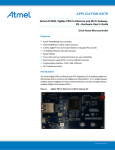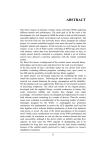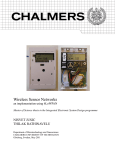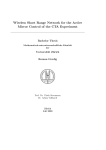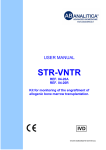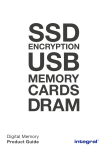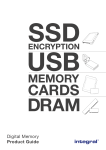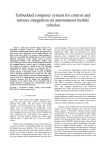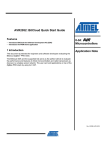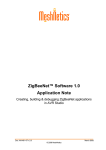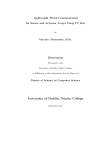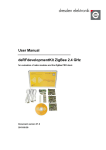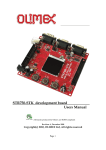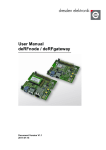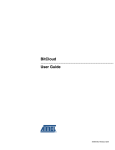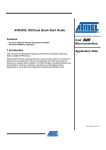Download Wireless sensor network for berth supervision in marinas
Transcript
Wireless sensor network for berth supervision in marinas Roko Krpetic, Dinko Oletic, Vedran Bilas University of Zagreb Faculty of Electrical Engineering and Computing Zagreb, Croatia Email: [email protected], [email protected], [email protected] Abstract—In this paper a berth supervision system for marinas is presented. Berth occupancy is detected using wireless ultrasonic sensor nodes installed on every berth. ZigBee RFID tags installed on each boat are used for its identification. RFID readers installed along marina wharfs route tag messages to a central computer. Prototype system is implemented using Atmel ZigBee development kits and Atmel Bitcloud stack. Power consumption and large scale network support are analysed and tested. System functionality was successfully demonstrated in a marina field test. Estimated run times of the boat tag and the berth sensor node are over two, and three years, respectively. Index Terms—wireless sensor networks, marina berth supervision, RFID, ZigBee. I. I NTRODUCTION Berth supervision is important for marina logistics management. It consists of two functions: berth occupancy control and boat identification. It’s often necessary to determine the number of free berths at a given time, and to verify whether a berth is occupied by its holder. Berth occupancy check and boat identification are usually performed manually. An employee has to patrol the marina, visually inspect berths and verify boats. This approach is, obviously, inefficient. It is timeconsuming and expensive, with increased probability of error. Automatic berth supervision offers many advantages for marina management. Such a system can automatically record boat arrivals and departures, graphically present occupancy, be used to send information to the boat owner, and provide new billing policies. Berth occupancy can be detected using a small number of sensors such as cameras which have proven adequate for parking space detection [1]. Their advantage is low hardware cost since only a few cameras can cover the whole marina and image processing can be used for boat identification at the same time. However, since marina berths and boats come in various sizes and shapes, false detection becomes more probable, making such a solution require custom development and training. Another approach is to use a large number of distance measurement sensors mounted on each berth. A potential drawback of such an approach is the higher overall cost. Ultrasonic and optical sensors are the strongest candidates, with ultrasonic sensors being less susceptible to environmental conditions (sunlight, underwater operation). Many experiences and solutions from the field of intelligent parking lot applications are applicable to such systems. These systems normally use wireless sensor networks in favour of wired networks [2]. Main research issues are energy consumption versus duty cycle [3], topology and routing [4]. Networks are mainly based on 802.15.4 protocol, and ZigBee is often used as a proven solution for fast development [5], [6]. In such networks, boat identification could be optimally done by radio identification (RFID). In addition, position of the wireless tag could also be estimated using network’s localization capabilities [7]–[9]. Current localization solutions require custom development and training, whereas reported maximum localization accuracy is around 1.8 m. Without localization, a system can only provide an inventory of all boats in the marina. Nevertheless, if a berth state changes to occupied, and the berth holder’s boat is in the marina at the same time, we can assume with a certainty that the holder has docked at his own berth. Summing all advantages and drawbacks, we have chosen to use ultrasonic sensors for occupancy detection and ZigBee tags for boat identification. The goal of this article is to evaluate the use of ZigBee for RFID, considering the marina-specific requirements. The berths are usually leased for a year-long period, so the runtime of all battery powered devices in boats should be at least one year. All other battery powered devices should last as long as possible. A typical marina has 500 berths, which means that large scale network support should also be ensured. Additionally, system infrastructure should be kept simple and cost-effective. System layout and hardware, RFID implementation concept, challenges regarding power management and large network support are described in Section II. Tests and results are presented in Section III and conclusions are given in Section IV. II. M ETHODS A. System layout and hardware Wireless ultrasonic berth sensor nodes (Fig. 1) are mounted on every berth and used as occupancy detectors. When awake, a berth sensor node checks berth state and notifies the reader of any change (Fig. 2a). Also, every berth holder’s boat is equipped with an active RFID boat tag. Boat tags and berth sensor nodes are enddevices and do not communicate with each other. They send messages directly to the readers mounted along marina docks. Readers are responsible for Coordi nator Computer Wakes up Wakes up Reader Ultrasonic detection Berth sensor node Boat tag Berth sensor node Boat in marina? Boat outside marina? Send boat ID Attempt network connection Berth state changed? Berth sensor node Berth sensor node Boat tag Notify reader Fig. 1. Berth occupancy and boat identification system layout routing the messages to the coordinator, which delivers information to the computer. When the boat is in the marina, the boat tag is connected to the ZigBee network and reports the boat ID every time it awakes (Fig. 2b). When the boat leaves the marina, it disconnects from the network. As long as the boat remains away from the marina, the boat tag will periodically attempt reconnecting to the network, once every wake state. The ultrasonic sensor should have a low power consumption - few mA on average during the detection period (less than 200 ms). Also, it should be CMOS 3.3 V compatible. It’s important that the sensor itself is robust and waterproof (IP67 rating). Specific beam geometry is an important requirement as well. Having in mind that the smallest berths are 3 m wide, the beam should be roughly 3 m wide at a 3 m distance from the waterside. Beam range should be at least 5 m. System prototype was developed using Robot Electronics SRF05 ultrasonic sensor and Meshnetics MeshBean Amp development boards. The boards are equipped with Meshnetics Zigbit module based on Atmel ATmega1281 microcontroller. Developed software uses Atmel Bitcloud stack [10]. Sleep Sleep (a) (b) Incoming message Boat ID? Berth state occupied? Berth state empty? Reset timeout timer/ add new timeout timer Check boat inventory Berth empty Owner docked or issue a warning Delete boat record in inventory Timer runs out (c) B. RFID implementation Given the described layout, RFID system is implemented by managing a table of boat tags connected to the network (real time inventory of boats in marina). Every record in this inventory should have a timeout timer. As long as the boat tag is in the network, it sends its ID which resets the corresponding timer and the boat record remains in the inventory. Timeout timer is responsible for deleting the record if the tag (boat) exits the marina. When a specific berth sensor node detects berthing, the system should find an owner in the berth-owner table, and then look up the boat inventory with the owner ID. If the owner is in the inventory, the system can assume the berth owner has docked on his berth. Otherwise, the system can warn that unidentified boat has docked. Fig. 2. a) Berth sensor node, b) boat tag and c) central computer software flowchart 1) ID messages: There are two ways the tag can transmit its ID. The first one is through 802.15.4 polling mechanism which is normally used to inform the parent that the child is awake and ready to receive data buffered while sleeping [11]. In our scenario we can use polling messages just to manage the children table on the reader. The alternative is to simply use application layer messages. Polling messages use COMMAND frame instead of DATA, which is shorter [12]. Also, they are transparent to the upper layers, making the communication process less resource-intensive. Hence, we expect the polling Reader Computer Berth- owner table Tags Sensor nodes Application/ Polling Berth status change Partial boat inventory Children table (timeout timers) Algorithm otuput Algorithm otuput Algorithm (a) Reader Tags Application/ Polling Sensor nodes Berth status change Children table (timeout timers) Computer Berth- owner table New tag / tag left Boat inventory Algorithm otuput Berth status change Algorithm Fig. 4. Power consumption of the polling and application messages with wireless node operating at 3.3 V (b) Reader Computer Berth- owner table Tags Application Application Sensor nodes Berth status change Berth status change Boat inventory (timeout timers) Algorithm otuput Algorithm (c) Fig. 3. Boat inventory management approaches: a) on the reader lever, b) distributed between reader and computer, c) on the computer level messages to be more energy efficient. 2) Managing boat inventory: Regardless of the message types used, boat inventory management can be implemented in three ways (Fig. 3). The first approach is to manage inventory and berth-owner table on the reader level, using ZigBee children table. The problem with this approach is that every reader manages its own children table (partial inventory), so berth sensor node and its corresponding boat tag should connect to the same reader for the system to operate correctly. The second approach is that every reader manages its own children table and sends messages to the computer via the coordinator only when a tag leaves, or a new tag enters the network. The computer uses these messages to manage the complete boat inventory of the marina without using timeout timers (they are used on the reader level). Both polling or application messages can be used. The third approach is to use the ZigBee network only for forwarding the messages to the computer, while complete processing is done on the computer level. Only application messages can be used. Fig. 5. Test application graphical user interface To find the optimal approach, we have measured and compared power consumption between polling and application messages as seen in Fig. 4. The results are unexpected: polling and application message energy consumptions are measured at 2.9 mJ and 0.7 mJ, respectively. Such high polling message consumption stems from the long standby period following the transmission of the polling message. During this period the node awaits the incoming parent messages. Its duration is not user-configurable. This prolongs the wake state and consumes more power in the end. Therefore, we decided to use application messages and the third approach. ZigBee network forwards periodical messages from the boat tags and messages from berth sensor nodes to the computer which manages boat inventory as shown in Fig. 2c and provides information to the user (Fig. 5). C. Power management There are two types of battery powered nodes in this system: boat tags and berth sensor nodes. As usual in wireless sensor networks, reducing endnode energy consumption is a key challenge. Node runtime directly depends on the duty-cycle. Longer node sleep period Tsleep prolongs node runtime, but introduces lag to system operation which decreases quality of service. Therefore node runtime will be measured as a function of variable Tsleep . As seen in Fig. 2b, there are two possible states after the tag wakes up: boat tag connected to the network (boat in the marina) and boat tag not connected (boat out of the marina). In the first case, boat tag should send boat ID. As presented in Section IIB, tests have shown that application messages are more energy efficient. In the second case, boat tag has to try to connect to the network once. This wake state consumes a lot of power. Bitcloud uses active channel scan. Connection is initiated by sending a beacon request, and waiting for beacons from potential parent nodes [13]. Both the waiting time and the number of beacon requests are configurable. Shorter scanning time results with longer runtime, and also with greater risk the radio will turn off before the beacon is received. Also, the fewer the number of attempts, the more probable the connection failure will be in case the parent node is currently busy with some other operation. We have tested and measured power consumption of various combinations to determine the optimal ratio as shown in Section III. Ultrasonic berth sensor nodes are always connected to the network, so the power consumption depends only on the characteristics of the ultrasonic sensor. D. Large network support Average marina has 500 berths, which means the average number of nodes in the network is about 1000. To analyse potential node number limits, we have to consider network topology. Our network has a maximum of 2 hops, with many nodes directly connected to routers (readers), and several dozen readers connected to the coordinator. ZigBee protocol uses 16 bit network addresses so it theoretically supports network with as many as 65536 nodes [12]. Bitcloud stack doesn’t define the maximum number of nodes but the user’s manual [10] claims support for hundreds of devices. Atmel’s development team has unofficially tested a network with 112 nodes [14]. Furthermore, the limits on reader level are defined by the amount of RAM available for children table management. Bitcloud uses 49 B per child record in this table [10]. Newer Atmel chips (ATmega128RFA1) have 16 kB of RAM. The stack uses about 7 kB, which means the rest is available for 188 children node records. Thus, this is a serious limitation only when older chips are used with only 8 kB of RAM. Another potential limitation is the overload due to excessive communication, so application confirmations and communication are reduced as much as possible. III. T ESTS AND RESULTS A. Field test Our prototype network was tested in a marina to check all functions and to demonstrate system performance in real conditions. The test included ultrasonic sensor calibration (Fig. 6), and both tagged and untagged boat docking and departure. Fig. 6. Berth sensor mounted on the pontoon forefront as seen from above TABLE I B OAT TAG WAKE STATES POWER CONSUMPTION State Tag in network Duration Consumption 9 ms 0.73 mJ Tag outside network 789 ms 51.99 mJ Ultrasonic measurement 285 ms 19.32 mJ The test took place 6th June 2011 in Zadar, Croatia. Ultrasonic sensor was calibrated using a range threshold of 3 m. The reader was set on a 3 m high base. When a tag was placed in the boat cabin, its range was about 50 m using the half of maximum transmitter power (-5 dbm). All situations were properly detected which proved accurate system performance. B. Power consumption and node runtime We measured power consumption of active node states to estimate node runtime. Measurements were carried out using a Tektronix A6802 current probe and National Instruments NI-6211 acquisition card. Sleep current was measured using Fluke 45 multimeter. The results were obtained and calculated using Matlab. There are two possible wake states for a boat tag: tag in and out of the network. The first state comprises of sending tag ID, and the latter state is an attempt to connect to the network. As described in Section II, subsections B and C, various combinations of waiting time and number of beacon requests were tested and measured. Tests have shown that using two beacon requests and a medium waiting time is optimal for reliable reconnection upon a boat tag’s return to the marina. Berth sensor node power consumption was also measured using sensor SRF05. This measurement was used as a base for consumption estimation of Maxsonar MB7067 sensor suitable for final installation. Power consumptions are shown in Table I. Finally, these measurements were used for node runtime estimation, assuming the use of a standard 1100 mAh alkaline battery. Boat tag runtime is shown in Fig. 7, depending on how long the boat remains in the marina (p1 ), and how long outside the marina (p2 ). Boats stay docked in the marina most of the time, so situations with p1 > 0.5 are realistic. Berth sensor node runtime is shown in Fig. 8. estimated to last over year and half, and sensor node over three years. The main limit for the network size is available reader RAM. Battery powered infrastructure (except readers) ensures low cost and fast installation. Developed system solves various logistics problems in a marina, especially with the reservation of transit berths. First field test of prototype network was carried out, so the next step should be permanent system installation for a long term in-field testing. ACKNOWLEDGEMENT This research has been partly supported by the ACROSS project, 285939 FP7-REGPOT-2011-1. The authors would like to thank Sailing Club Uskok from Zadar for in-field test support. R EFERENCES Fig. 7. Boat tag runtime in years as a function of Tsleep (p1 refers to the percentage of time that boat remains in the marina, and p2 outside the marina) Fig. 8. Berth sensor node runtime in years as a function of Tsleep The analysis of these graphs concludes that for Tsleep of 3 minutes, estimated boat tag runtime is from 1.3 to 15 years, and berth sensor node over three years. Having in mind that boat berthing and departure takes over 10 minutes, these results are entirely satisfactory. Finally, we can roughly estimate node prices based on deRFmega128 module (33 e), waterproof sensor Maxsonar (73 e) and IP67 case prices. Sensor nodes are the most expensive part of the system and should cost about 130 e, while tag price estimate is 50 e. These are retail prices for one piece order. IV. C ONCLUSION Automatized berth supervision system is described. Tests have proven that system is beneficial and meets predetermined requirements. With Tsleep set to 3 min, boat tag battery is [1] H. Ichihashi, A. Notsu, K. Honda, T. Katada, and M. Fujiyoshi, “Vacant parking space detector for outdoor parking lot by using surveillance camera and fcm classifier,” in Fuzzy Systems, 2009. FUZZ-IEEE 2009. IEEE International Conference on, aug. 2009, pp. 127 –134. [2] J. Chinrungrueng, U. Sunantachaikul, and S. Triamlumlerd, “Smart parking: An application of optical wireless sensor network,” in Applications and the Internet Workshops, 2007. SAINT Workshops 2007. International Symposium on, jan. 2007, p. 66. [3] S. eun Yoo, P. K. Chong, T. Kim, J. Kang, D. Kim, C. Shin, K. Sung, and B. Jang, “Pgs: Parking guidance system based on wireless sensor network,” in Wireless Pervasive Computing, 2008. ISWPC 2008. 3rd International Symposium on, may 2008, pp. 218 –222. [4] J. Benson, T. O’Donovan, P. O’Sullivan, U. Roedig, C. Sreenan, J. Barton, A. Murphy, and B. O’Flynn, “Car-park management using wireless sensor networks,” in Local Computer Networks, Proceedings 2006 31st IEEE Conference on, nov. 2006, pp. 588 –595. [5] S. Lee, D. Yoon, and A. Ghosh, “Intelligent parking lot application using wireless sensor networks,” in Collaborative Technologies and Systems, 2008. CTS 2008. International Symposium on, may 2008, pp. 48 –57. [6] Meshnetics, “Parking Lot Gets Smart with ZigBee,” 2007. [Online]. Available: http://www.meshnetics.com/netcat files/Image/ ZigBee%20Parking%20Automation%20Case%20Study.pdf [7] A.-I. Noh, W. Lee, and J. Ye, “Comparison of the mechanisms of the zigbee’s indoor localization algorithm,” in Software Engineering, Artificial Intelligence, Networking, and Parallel/Distributed Computing, 2008. SNPD ’08. Ninth ACIS International Conference on, aug. 2008, pp. 13 –18. [8] F. Sottile, R. Giannantonio, M. Spirito, and F. Bellifemine, “Design, deployment and performance of a complete real-time zigbee localization system,” in Wireless Days, 2008. WD ’08. 1st IFIP, nov. 2008, pp. 1 –5. [9] Nanotron, “Loss Protection Solutions,” 2011. [Online]. Available: http://www.nanotron.com [10] BitCloud: User Guide, Atmel, November 2009. [Online]. Available: http://www.atmel.com/dyn/resources/prod documents/doc8199.pdf [11] S. C. Ergen, “Zigbee/ieee 802.15.4 summary,” 2004. [Online]. Available: http://staff.ustc.edu.cn/∼ustcsse/papers/SR10.ZigBee.pdf [12] ZigBee Specification, r17 ed., ZigBee Standards Organization, October 2007. [Online]. Available: http://www.zigbee.org/ ZigBeeSpecificationDownloadRequest/tabid/311/Default.aspx [13] IEEE Std 802.15.4-2006 Part 15.4: Wireless Medium Access Control(MAC) and Physical Layer (PHY)Specifications for Low-Rate Wireless Personal Area Networks (WPANs), IEEE-SA Standards Board, June 2006. [14] Bitcloud-team, “100+ node ZigBee PRO network w/ BitCloud stack and WSN Monitor,” 2011. [Online]. Available: http://www.youtube. com/watch?v=bkH kJ0 DVY





